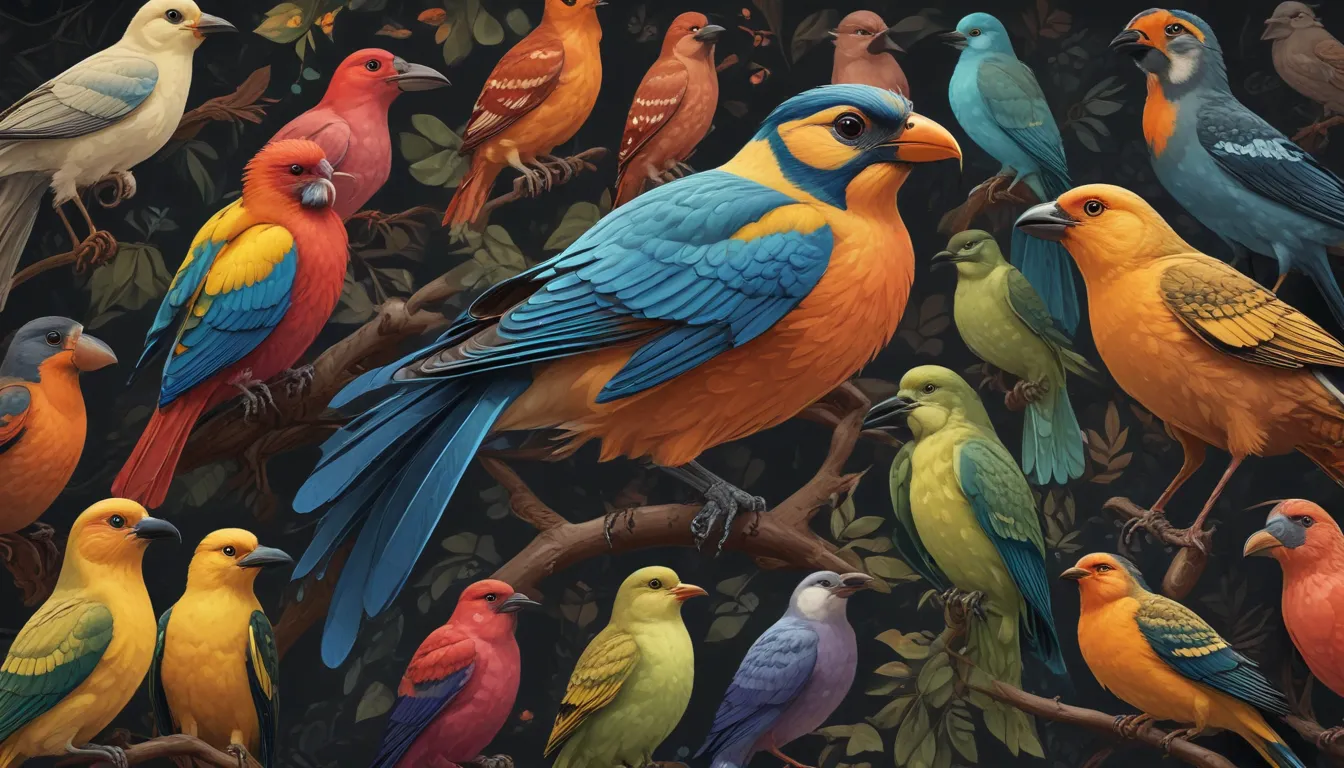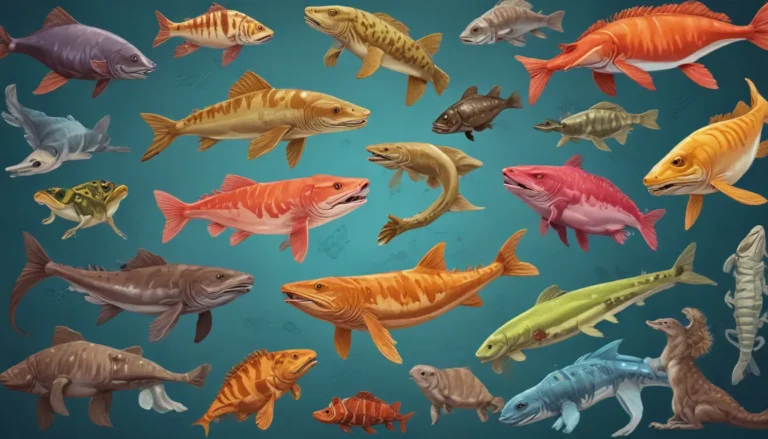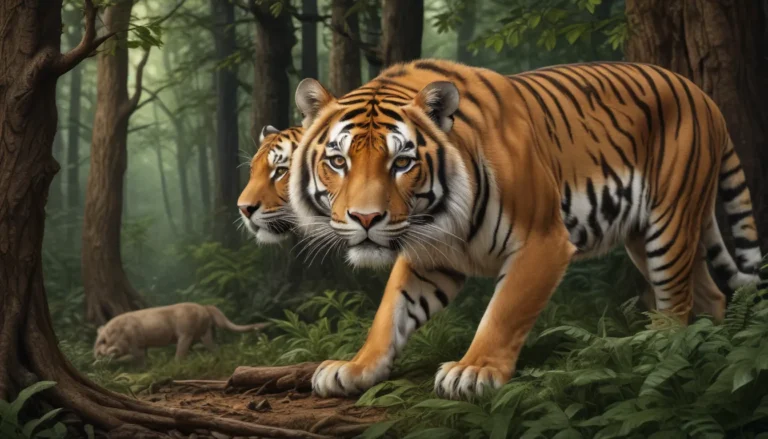A Note About Images: The images used in our articles are for illustration purposes only and may not exactly match the content. They are meant to engage readers, but the text should be relied upon for accurate information.
Birds have long been a source of fascination for humans, with their ability to fly, beautiful plumage, and unique adaptations. Whether you’re a casual birdwatcher or a seasoned ornithologist, there’s always something new to discover about these feathered creatures. In this article, we will explore 14 interesting and lesser-known facts about birds that will deepen your understanding and appreciation for these remarkable animals. From their incredible migration journeys to their impressive intelligence and communication skills, birds are truly a wonder of the natural world. So, let’s spread our wings and delve into the mesmerizing world of birds!
The Unique World of Bird Feathers
Feathers are among the most distinctive features of birds. These lightweight structures provide insulation, facilitate flight, and play a crucial role in courtship displays. Did you know that feathers are made of the protein keratin, the same substance that makes up our hair and nails? Feathers help birds fly, stay warm, and attract mates. They are truly a remarkable adaptation that sets birds apart from other animals.
The Marvel of Hollow Bones
Birds have hollow bones that make it easier for them to fly. These lightweight bones are not only strong but also allow birds to achieve impressive aerial maneuvers and long-distance migration. The unique structure of their bones enables birds to take to the skies with agility and grace, showcasing the incredible adaptations they have developed for flight.
The Biggest Bird in the World
The ostrich holds the title of the largest bird in the world. Native to Africa, the ostrich can reach heights of up to 9 feet tall and weigh over 300 pounds. Despite being flightless, this remarkable bird can run at speeds of up to 40 miles per hour, showcasing its impressive adaptations for survival in its environment.
The Hummingbird’s Unique Flight Skills
Hummingbirds are the only birds that can fly backward. With their specialized wing structure and rapid wing-flapping, hummingbirds can hover in mid-air and perform incredible aerial acrobatics. These tiny birds beat their wings at an incredible rate of up to 80 times per second, demonstrating their remarkable agility and flight skills.
The Wonders of Penguin Adaptations
Penguins may not fly, but they are incredible swimmers. Using their wings as flippers, penguins glide through the water with grace and speed. While they may have lost the ability to fly, their swimming prowess and agility in the water are truly awe-inspiring, showcasing the diversity of adaptations found in the bird kingdom.
The Ancient Link Between Birds and Dinosaurs
The oldest known bird, the Archaeopteryx, lived approximately 150 million years ago during the Late Jurassic period. Considered an evolutionary link between dinosaurs and modern birds, the Archaeopteryx possesses both reptilian and avian features. This ancient bird provides valuable insights into the evolution of flight and the origins of avian life on Earth.
The Spectacular Eyesight of Birds
Birds have exceptional eyesight, with some species being able to see ultraviolet light. This remarkable vision aids in hunting, navigation, and foraging for food. The ability of birds to perceive a wide range of colors and details in their environment is a testament to their adaptability and survival skills in diverse habitats.
The Majestic Wingspan of the Wandering Albatross
With a wingspan reaching up to 11 feet, the wandering albatross has the largest wingspan of any bird species. This majestic seabird spends most of its life flying over the open ocean, showcasing the beauty and grace of birds in flight. The impressive size of its wings allows the wandering albatross to soar effortlessly over vast distances in search of food and mates.
The Intelligence of Crows
Crows are highly intelligent birds known for their cognitive abilities and problem-solving skills. They can recognize human faces, use tools to obtain food, and even teach their offspring complex behaviors. The intelligence of crows demonstrates the sophisticated cognitive abilities found in birds and highlights their adaptability in a changing environment.
The Crucial Role of Birds in Seed Dispersal
Birds play a crucial role in seed dispersal, helping many plants colonize new areas and maintain genetic diversity. By eating fruits and excreting seeds in different locations, birds facilitate the spread of plant species and contribute to the health of ecosystems. This symbiotic relationship between birds and plants underscores the interconnectedness of species in the natural world.
The Astonishing Migration Journeys of Birds
Some birds undertake extraordinary migration journeys, covering thousands of miles each year. Species like the Arctic tern and the bar-tailed godwit demonstrate remarkable endurance and navigation skills as they traverse vast distances in search of food and breeding grounds. The incredible journeys of migratory birds highlight the resilience and adaptability of these remarkable creatures.
The Surprising Identity of the American Robin
Despite its name, the American robin belongs to the thrush family, not the robin family. This common North American bird showcases the diversity of bird species and the importance of scientific classification in understanding their evolutionary relationships. The American robin’s distinctive appearance and behavior make it a familiar sight in many urban and suburban environments.
The Melodious Songs of Birds
Each species of bird has its own unique song or call, allowing them to communicate with others and establish territories. The melodious tunes of birds add beauty and enchantment to any outdoor setting, connecting us to the natural world through their vocalizations. The diversity of bird songs reflects the richness of avian life and the importance of communication in their social interactions.
The Remarkable Mimicry Skills of Birds
Some birds, such as the lyrebird and the parrot, are excellent mimics, capable of imitating sounds from their surroundings with remarkable accuracy. From other bird calls to human speech and mechanical sounds, these talented mimics showcase the adaptability and creativity of birds in their acoustic communication. Their ability to mimic a wide range of sounds adds another layer of complexity to the rich tapestry of bird behavior.
As we conclude our exploration of the fascinating world of birds, we have uncovered a wealth of information about their extraordinary adaptations, behaviors, and characteristics. From the unique features of feathers to the astonishing migration skills of birds, each fact offers a glimpse into the remarkable diversity and complexity of avian life. By delving into the captivating facts about birds, we gain a deeper appreciation for these fascinating creatures and the vital role they play in ecosystems around the world.
FAQs: Exploring Birds Further
- How many species of birds are there in the world?
-
Approximately 10,000 known species of birds inhabit the globe, showcasing the incredible diversity of avian life.
-
How do birds navigate during long migrations?
-
Birds use various navigation cues such as the position of the sun, stars, and magnetic fields to guide them during their long migratory journeys.
-
Can birds see color?
-
Many bird species have excellent color vision, allowing them to perceive a wide range of vibrant colors in their environment.
-
Do all birds build nests?
-
Not all bird species build nests; some prefer to lay their eggs in existing structures or on the ground, showcasing the diversity of nesting behaviors in birds.
-
How fast can birds fly?
-
The speed of a bird’s flight varies by species, with the peregrine falcon holding the record for the fastest recorded flight speed, reaching up to 240 miles per hour.
-
Can birds mimic human speech?
-
Certain bird species, such as parrots and mynah birds, have the ability to mimic human speech and other sounds with remarkable accuracy.
-
Do birds migrate at night?
-
Some bird species migrate at night, using the stars and moon as navigation guides to guide them on their migratory journeys.
-
How long do birds live?
-
The lifespan of a bird varies by species, with some living only a few years while others can live for several decades, showcasing the diversity of longevity in avian life.
-
What is the smallest bird in the world?
-
The bee hummingbird, found in Cuba, holds the title of the smallest bird in the world, measuring only about 2.25 inches in length, highlighting the incredible diversity of bird sizes.
-
Can birds communicate with each other?
- Birds communicate with each other using a variety of vocalizations, body movements, and visual displays to convey information and establish social connections, highlighting the importance of communication in bird behavior.
In conclusion, birds are truly remarkable creatures that captivate our attention with their beauty, behavior, and incredible abilities. By exploring the fascinating facts about birds, we gain a greater appreciation for their unique adaptations, intelligence, and essential role in the natural world. The diverse and captivating world of birds continues to inspire us to explore and appreciate the wonders of nature, reminding us of the intricate and awe-inspiring complexity of avian life. So, the next time you encounter a bird in the wild, take a moment to marvel at its beauty and remember the fascinating facts that make it such a remarkable and enchanting creature.






